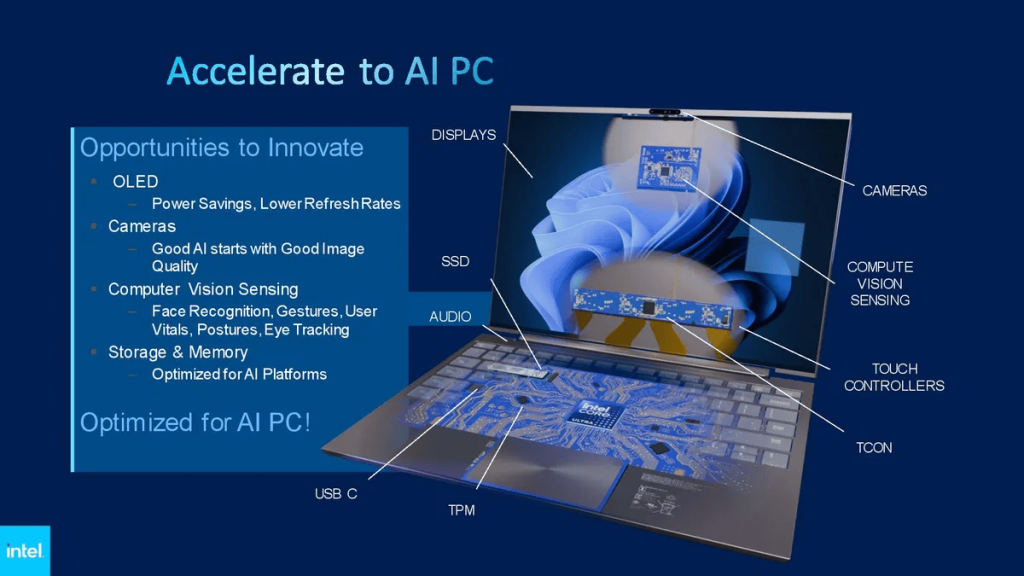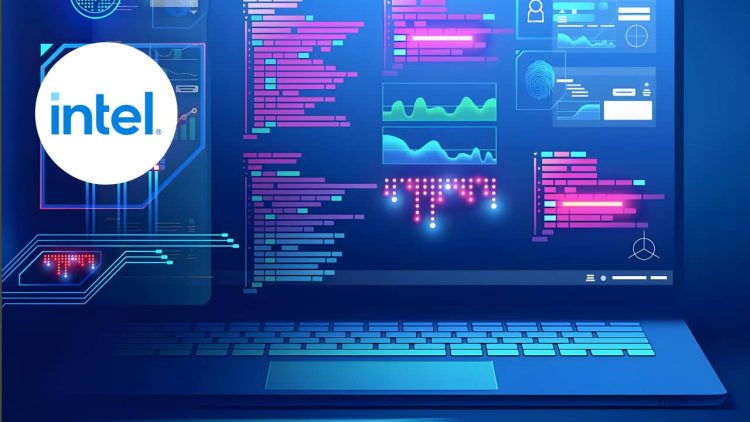Intel recently announced that it is expanding its AI PC acceleration program by introducing two new fresh initiatives to boost the development and deployment of new AI technologies. With the help of these initiatives, Intel aims to optimize and maximize AI features across over 100 million Intel Core Ultra-powered PCs by 2025.
Highlights:
- Intel announced an expansion of its AI PC acceleration program by introducing two new initiatives to boost the development and deployment of new AI technologies.
- The company plans to introduce more than 300 AI-accelerated features by the end of 2024 which will be integrated into over 100 million Intel Core Ultra-powered PCs.
- Intel has partnered with major independent software vendors (ISVs) like Adobe, Webex, and Zoom to integrate AI acceleration into their applications.
Intel AI PC Acceleration Program
Intel launched the AI PC Acceleration Program to accelerate AI development across the PC industry.
The program aims to develop a collaboration between independent hardware vendors (IHVs) and independent software vendors (ISVs) with a range of Intel resources that include AI toolchains, co-engineering, hardware, design resources, technical expertise, and co-marketing opportunities.
Michelle Johnston Holthaus, executive VP and general manager of the Client Computing Group at Intel said the following about the AI PC accelerated program:
“Intel recognizes that software leadership is key to the AI PC experience, and we’re uniquely positioned to lead the industry with an open ecosystem approach. With a long history in AI development and a deep network of ISV engineering relationships, Intel will take an active role in fostering connections and innovations that propel new use cases and experiences on the PC.”
Carla Rodriguez, Vice President and General Manager of the Client Software Ecosystem emphasized the importance of this expansion, noting the program’s transition from primarily involving large ISVs to now encompassing small and medium-sized players as well as aspiring developers.
Through this program, the company aims to enhance the developer experience by offering software, developer tools, and hardware integrated with Intel Core Ultra processors. Collaborating with over 150 hardware vendors worldwide, They intend to introduce more than 300 AI-accelerated features in 2024 across over 230 designs from 12 global original equipment manufacturers (OEMs).
To advance these initiatives, Intel intends to organize a series of local developer events worldwide in strategic locations, similar to the recent summit held in India. The company plans to have up to ten additional events this year as part of its ongoing efforts to expand the developer ecosystem.
What does an AI PC do?
The emergence of AI offers significant prospects for integrating novel hardware and software functionalities into the established PC platform. Yet, the precise definition of an AI PC remains somewhat ambiguous.
Several companies, such as Intel, AMD, Apple, and soon Qualcomm with its X Elite chips, have engineered processors featuring dedicated AI accelerators integrated alongside conventional CPU and GPU cores. However, each company has its interpretation of what qualifies as an AI PC.
For months now, Intel, Microsoft, Qualcomm, and AMD have been advocating the concept of an “AI PC” as we move towards more AI-driven features in Windows. While finer details from Microsoft regarding its AI plans for Windows are awaited, Intel has begun sharing Microsoft’s requirements for OEMs to manufacture an AI PC.
One of the key requirements is that an AI PC must include Microsoft’s Copilot key.
According to the latest co-developed definition from Microsoft and Intel, an AI PC will feature a Neural Processing Unit (NPU), along with compatible CPU and GPU components supporting Microsoft’s Copilot. Additionally, it will include a physical Copilot key situated on the keyboard, replacing the second Windows key typically found on the right side.

This implies that certain laptops like Asus’ latest model ROG Zephyrus, that are equipped with new Core Ultra chips, fail to meet Microsoft’s AI PC requirements as they lack a Microsoft Copilot key. However, Intel still considers them AI PCs.
While they are jointly promoting this definition for the AI PC concept, Intel offers a simpler definition requiring a CPU, GPU, and NPU, each with dedicated AI acceleration capabilities.
Intel envisions distributing AI tasks among these units, leveraging the NPU’s power efficiency for lighter tasks like media processing, enhancing battery life, and ensuring data privacy. This strategy frees the CPU and GPU for other tasks while allowing them to handle heavier AI workloads, preventing overload of the NPU.
Additionally, the NPU and GPU can collaborate on certain tasks, including running an LLM together if necessary.
Features of AN AI PC
Intel says that AI will enable a host of new features, however many of the new use cases are undefined because we are still in the early days of AI adoption.

For example, integrating gaze detection with power-saving features in OLED panels can adjust refresh rates or turn off the screen when the user is away, thus conserving battery life. Functions like background segmentation for video conferencing can be offloaded from the CPU to the NPU, saving power.
This NPU efficiently manages sustained AI workloads with minimal power consumption, thereby enhancing power efficiency and extending battery life on laptops. While this may seem minor, Intel claims it could extend battery life by up to an hour in certain scenarios.
Other applications include eye gaze correction, auto-framing, background blurring, noise reduction, audio transcription, and meeting notes, some of which can run directly on the NPU with support from platforms like Zoom, Webex, and Google Meet.
Companies are also developing coding assistants trained on user data and Retrieval-Augmented Generation (RAG) models for more accurate search results.
Additional use cases involve image, audio, and video editing features integrated into software suites like Adobe Creative Cloud. Security is another focus, with AI-powered anti-phishing software in development.
Intel engineers have even created a sign-language-to-text application using video detection, showcasing the diverse range of potential applications benefiting users.
AI PC Program Partners
Intel has already partnered with major ISVs like Adobe, Audacity, BlackMagic, BufferZone, CyberLink, DeepRender, Fortemedia, MAGIX, Rewind AI, Skylum, Topaz, VideoCom, Webex, Wondershare Filmora, XSplit and Zoom. The aim is to optimize their services to take full advantage of the latest generation of Core Ultra Processor-powered PCs.
How can Developers Join the Program?
Developers interested in joining the AI PC Acceleration Program can register for free through the Intel AI PC development portal. Upon approval, participants will receive access to a suite of AI and machine learning tools and resources, including the Intel OpenVINO toolkit at no cost.
Additionally, they offer courses and certifications to stay updated on the latest technologies and innovations. The company will also offer technical support and assistance to help hardware vendors optimize and test their latest technologies.
Conclusion
Intel’s expansion of the AI PC acceleration program aims to enhance AI development and deployment across millions of Core Ultra-powered PCs by 2025. Also, read about the new Light 01 AI Assistant that is another interesting way to integrate AI in your life.








